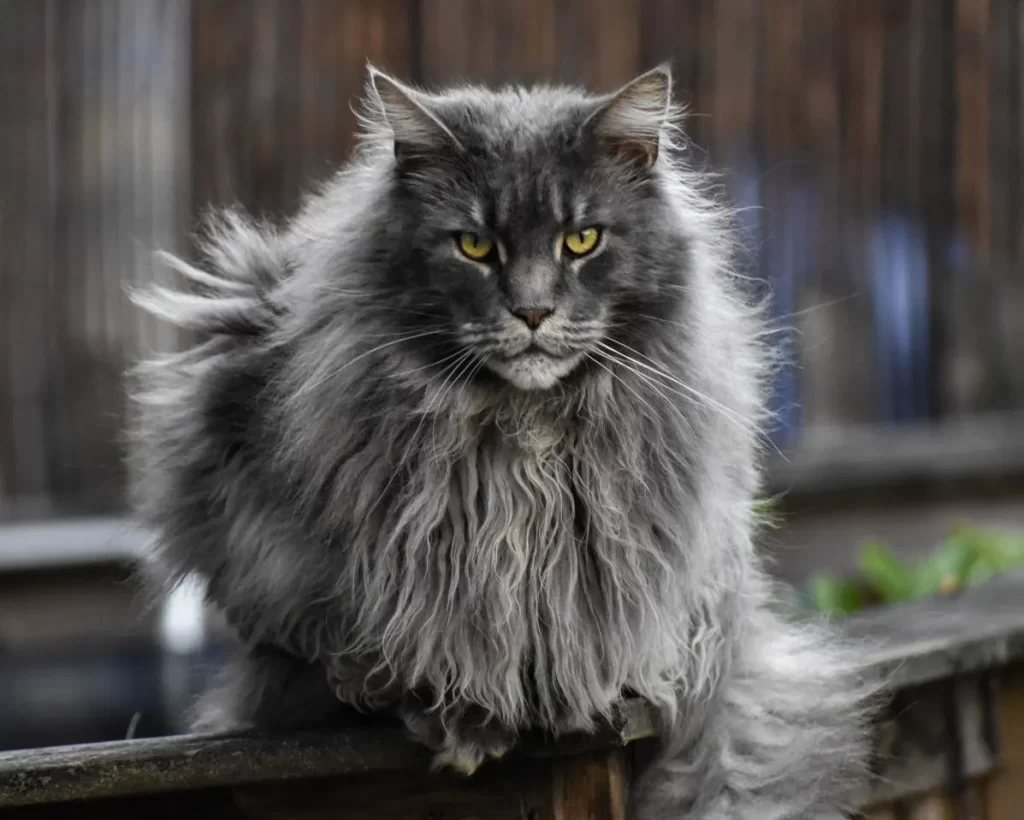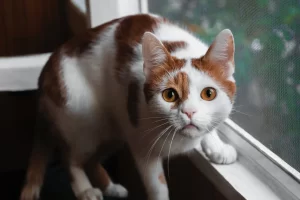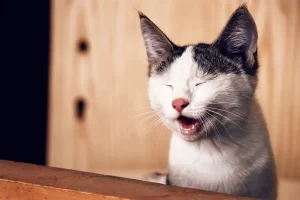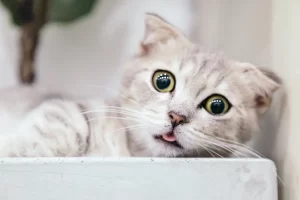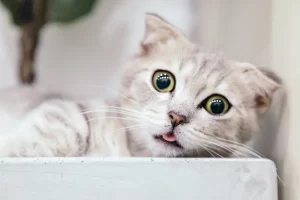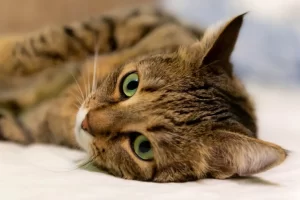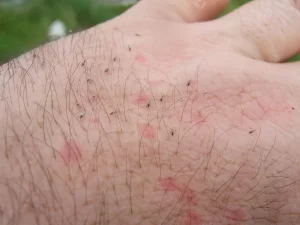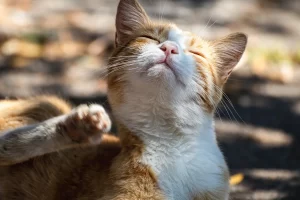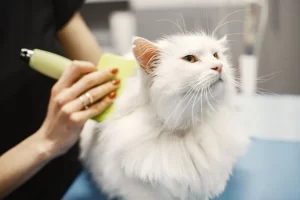Fatty liver disease in cats is a common and serious condition that can lead to liver failure if left untreated. While medical intervention is important, home treatment for fatty liver disease in cats can also play a crucial role in managing the condition and improving the cat’s quality of life. There are several ways that owners can provide care for their cats at home, including dietary changes, hydration, and monitoring. In this article, we will discuss the various aspects of home treatment for fatty liver disease in cats, including nutritional requirements, recommended diets, monitoring progress, potential complications, stress reduction, and prevention. By following these guidelines, cat owners can help their furry friends manage this condition and potentially improve their prognosis.
Table of Contents
ToggleOverview of Fatty Liver Disease in Cats
Fatty liver disease, also known as hepatic lipidosis, is a common liver disorder in cats that occurs when fat accumulates in the liver, leading to liver dysfunction. The condition can be life-threatening if left untreated. Fatty liver disease can affect cats of any age or breed, but it is most common in obese cats, particularly those who have experienced sudden weight loss or have stopped eating for extended periods of time. Other risk factors for fatty liver disease in cats include diabetes, hyperthyroidism, and certain medications. The exact causes of the disease are not fully understood, but it is believed to be a result of a complex interaction of factors, including obesity, insulin resistance, and changes in liver metabolism. Early detection and prompt treatment are critical for the successful management of fatty liver disease in cats.
Symptoms of Fatty Liver Disease in Cats
Fatty liver disease in cats can present with a variety of symptoms, some of which may be subtle and difficult to detect. However, as the disease progresses, the symptoms can become more pronounced and noticeable. Some of the most common symptoms of fatty liver disease in cats include:
- Weight loss: Rapid weight loss is often one of the earliest and most noticeable symptoms of fatty liver disease in cats. This is because the body starts to break down fat reserves to provide energy when the liver is unable to function properly.
- Vomiting: Cats with fatty liver disease may experience vomiting, particularly after eating. This can be a result of the liver’s inability to process and eliminate toxins from the body.
- Lethargy: Cats with fatty liver disease may become lethargic and show a lack of interest in activities they previously enjoyed. If your cat is just lethargic, boost its energy with these home remedies!
- Poor appetite: Fatty liver disease can cause cats to lose their appetite and become reluctant to eat, leading to further weight loss.
- Jaundice: Yellowing of the skin, eyes, and gums is a sign of jaundice, a condition that can occur when the liver is unable to process bilirubin properly. If this is happening to your cat, you may be able to treat it at home by following these remedies and guidelines.
- Dehydration: Cats with fatty liver disease may become dehydrated due to poor fluid intake and increased urination.
- Behavioral changes: Cats with fatty liver disease may become irritable, depressed, or show signs of confusion.
- Poor coat condition: Fatty liver disease can cause a cat’s coat to become dull and unkempt, and may result in excessive shedding.
It is important to note that these symptoms may be indicative of other health conditions as well, so it is essential to seek veterinary care if you notice any of these signs in your cat. Early detection and treatment can help improve your cat’s prognosis and increase their chances of a successful recovery.
Diagnosis of Cats’ Fatty Liver Disease
The diagnosis of fatty liver disease in cats can be challenging, as the symptoms may be similar to those of other health conditions. However, there are several diagnostic tests that veterinarians may use to confirm the presence of fatty liver disease in cats, including:
- Blood tests: Blood tests are commonly used to diagnose fatty liver disease in cats. These tests can detect elevated liver enzymes and other markers of liver dysfunction. Blood tests may also be used to assess the cat’s overall health, including kidney function and electrolyte levels.
- Ultrasound: An abdominal ultrasound can help visualize the liver and detect the presence of fat deposits. This non-invasive test is commonly used to diagnose fatty liver disease in cats.
- Biopsy: In some cases, a liver biopsy may be necessary to confirm the diagnosis of fatty liver disease. During a liver biopsy, a small piece of tissue is removed from the liver and examined under a microscope. This can help identify the presence of fat deposits and determine the extent of liver damage.
- X-rays: X-rays may be used to assess the size of the liver and detect any abnormalities.
- Urine tests: Urine tests may be used to assess kidney function and detect the presence of protein or glucose, which may be elevated in cats with fatty liver disease.
Note that not all cats with fatty liver disease will have abnormalities on diagnostic tests. Therefore, a comprehensive evaluation by a veterinarian, including a thorough medical history and physical examination, is essential for a proper diagnosis.
Treatment Options for Fatty Liver Disease in Cats: A Guide
The treatment of fatty liver disease in cats can be complex and may require a multi-faceted approach. The goal of treatment is to restore liver function and promote healing, while also addressing any underlying health issues that may have contributed to the development of the disease. The following are some of the treatment options that may be recommended by a veterinarian:
- Nutritional support: Cats with fatty liver disease often require nutritional support to help promote healing and prevent further weight loss. This may involve the use of a high-protein, calorie-dense diet that is formulated specifically for cats with liver disease. In some cases, feeding tubes may be necessary to ensure that the cat is receiving adequate nutrition.
- Medications: Several medications may be used to support liver function and promote healing in cats with fatty liver disease. These may include antibiotics to treat underlying infections, as well as medications to control vomiting, reduce inflammation, and support liver function.
- Fluid therapy: Intravenous fluids may be necessary to help rehydrate cats with fatty liver disease and restore electrolyte balance.
- Surgery: In rare cases, surgery may be necessary to remove any obstructions or masses that are contributing to the development of fatty liver disease.
- Management of underlying health conditions: If an underlying health condition, such as diabetes or hyperthyroidism, is contributing to the development of fatty liver disease, it is essential to manage that condition as well for example by using these home and natural remedies.
- Supportive care: Cats with fatty liver disease may require supportive care, such as frequent monitoring of vital signs, pain management, and assistance with grooming and other activities of daily living.
It is important to note that the treatment approach for fatty liver disease in cats will depend on the individual cat’s health status, the severity of the disease, and other factors. Therefore, it is essential to work closely with a veterinarian to develop an individualized treatment plan for each cat.
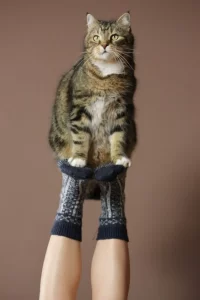
Providing Home Care for Cats with Fatty Liver Disease
Home care for cats with fatty liver disease is an essential part of the overall treatment plan. Here are some tips and recommendations for owners to care for their cats at home:
- Dietary changes: Feeding a high-protein, calorie-dense diet is essential for cats with fatty liver disease to regain lost weight and support liver function. It is recommended to feed small, frequent meals throughout the day and encourage the cat to eat as much as possible. Wet food or canned food may be more palatable than dry food and may be easier to eat for cats with dental problems. It is also important to avoid giving any table scraps or human food, as they may not be nutritionally balanced and may worsen the condition.
- Hydration: Dehydration can worsen the condition of cats with fatty liver disease, so it is important to ensure that they have access to clean, fresh water at all times. Adding a small amount of low-sodium chicken or beef broth to the water may encourage the cat to drink more.
- Monitoring: Owners should monitor their cat’s weight, food intake, and activity level closely. Weighing the cat regularly and keeping a log can help track their progress. Any sudden changes in appetite, activity level, or behavior should be reported to a veterinarian immediately.
- Medications: If the cat is prescribed medications, owners should follow the dosage and administration instructions carefully. If the cat experiences any adverse effects, such as vomiting or diarrhea, owners should contact their veterinarian right away.
- Encouraging activity: Encouraging light exercise, such as short walks or play sessions, may help improve the cat’s appetite and promote overall health. However, it is important to avoid overexertion, as this can cause additional stress on the cat’s liver.
- Providing a stress-free environment: Stress can worsen the condition of cats with fatty liver disease, so it is important to provide a calm, quiet environment for the cat. A comfortable, quiet place to rest, away from noise and activity, can help reduce stress and promote healing.
Nutritional Requirements for Cats with Fatty Liver Disease
Nutritional requirements for cats with fatty liver disease are critical to their recovery and overall health. The following are some key nutritional considerations for cats with this condition:
- Protein: Cats with fatty liver disease need to consume adequate protein to promote liver regeneration and prevent further muscle loss. The protein source should be of high quality, easily digestible, and provide all essential amino acids. However, it is important not to overfeed protein, as this can put additional strain on the liver. A diet that contains 35-40% protein is usually recommended for cats with fatty liver disease.
- Carbohydrates: Carbohydrates are not an essential nutrient for cats, but they can provide a source of energy and help reduce the burden on the liver. However, high-carbohydrate diets should be avoided, as they can cause rapid weight gain and contribute to the development of fatty liver disease. A diet that contains 10-15% carbohydrates is usually recommended for cats with this condition.
- Fats: While fats are an important source of energy and essential fatty acids, they can also contribute to the development of fatty liver disease. It is important to feed cats with fatty liver disease a diet that is low in fat, typically containing no more than 25-30% fat.
- Nutritional supplements: Nutritional supplements such as omega-3 fatty acids, vitamin E, and B vitamins can help support liver function and promote healing in cats with fatty liver disease. However, it is important to consult with a veterinarian before adding any supplements to the cat’s diet, as some supplements may be harmful or interact with medications.
- Feeding regimen: Cats with fatty liver disease may require frequent small meals throughout the day to promote weight gain and support liver function. Feeding a high-quality, calorie-dense diet formulated specifically for cats with liver disease is recommended.
Recommended Diets for Cats with Fatty Liver Disease
The diet for cats with fatty liver disease should be tailored to meet the specific nutritional needs of the cat while also supporting liver function and promoting weight gain. Here are some recommended types of food for cats with fatty liver disease:
- Commercial diets: There are commercial diets available that are specially formulated for cats with liver disease. These diets are typically high in protein and calories, low in fat, and contain added vitamins and minerals to support liver function. It is important to choose a high-quality commercial diet that is specifically formulated for liver disease and to follow the feeding instructions provided by the manufacturer.
- Homemade diets: Homemade diets can also be an option for cats with fatty liver disease, but it is important to work closely with a veterinarian to ensure that the diet is nutritionally balanced and meets the cat’s specific needs. Homemade diets can be made from ingredients such as cooked chicken or turkey, low-fat cottage cheese, boiled eggs, and cooked vegetables. It is important to avoid feeding raw or undercooked meat and to include a source of essential fatty acids such as fish oil.
- Nutritional supplements: Nutritional supplements such as omega-3 fatty acids, vitamin E, and B vitamins can be added to the cat’s diet to support liver function and promote healing. It is important to consult with a veterinarian before adding any supplements to the cat’s diet, as some supplements may be harmful or interact with medications.
Complications of Fatty Liver Disease in Cats: What to Expect
Fatty liver disease in cats can lead to various complications that can be severe and potentially life-threatening. Here are some potential complications associated with the disease:
- Hepatic encephalopathy: This is a condition in which the liver’s inability to remove toxins from the blood can lead to a build-up of ammonia, resulting in neurological symptoms such as disorientation, lethargy, and seizures.
- Pancreatitis: Inflammation of the pancreas can occur as a result of fatty liver disease in cats. Symptoms may include vomiting, abdominal pain, and loss of appetite. Home treatments include low-fat diets, probiotics, ginger and more.
- Sepsis: Sepsis can occur if the liver’s immune function is compromised as a result of fatty liver disease. Sepsis is a life-threatening condition that occurs when the body’s response to infection leads to tissue damage and organ failure.
- Portal hypertension: Fatty liver disease can lead to portal hypertension, a condition in which high blood pressure develops in the portal vein that carries blood from the digestive tract to the liver. This can lead to complications such as bleeding from the digestive tract.
- Liver failure: In severe cases, fatty liver disease can lead to liver failure, a condition in which the liver is no longer able to function properly. Symptoms of liver failure include jaundice, fluid buildup in the abdomen, and bleeding disorders.
Stress Reduction for Cats with Fatty Liver Disease: Why It Matters and How to Help
Stress can be a significant factor in the development and exacerbation of fatty liver disease in cats. When a cat is under stress, their body releases stress hormones, such as cortisol, which can interfere with the liver’s ability to function properly.
Owners can help reduce stress for their cats in several ways, including:
- Providing a calm environment: Creating a calm and peaceful environment for the cat can help reduce their stress levels. This can be achieved by providing a quiet, comfortable space for the cat to rest, away from loud noises and other sources of stress.
- Regular feeding schedule: Maintaining a regular feeding schedule can help reduce a cat’s stress levels and stabilize their blood sugar levels. This can help prevent the development of fatty liver disease in cats.
- Playtime and exercise: Regular playtime and exercise can help reduce a cat’s stress levels and improve their overall health. Interactive toys, scratching posts, and climbing structures can provide an outlet for the cat’s energy and help reduce their stress levels.
- Feliway or other pheromone sprays: Feliway is a synthetic pheromone spray that can help reduce a cat’s stress levels. Spraying Feliway around the home can create a calming environment for the cat and help reduce their stress levels.
Medications Used in the Treatment of Fatty Liver Disease in Cats
There are several medications that may be used to treat fatty liver disease in cats, including:
- Antibiotics: Antibiotics may be prescribed if the cat has an underlying infection that is contributing to the development or progression of fatty liver disease.
- Anti-inflammatory drugs: Nonsteroidal anti-inflammatory drugs (NSAIDs) may be used to reduce inflammation in the liver and improve liver function. However, caution should be taken when using NSAIDs in cats, as they can have potential side effects, including kidney damage and gastrointestinal ulcers.
- Ursodeoxycholic acid (UDCA): UDCA is a bile acid that has been shown to improve liver function and reduce inflammation in the liver. It may be prescribed as a supplement to help support liver health in cats with fatty liver disease.
- Vitamin E: Vitamin E is an antioxidant that can help reduce inflammation in the liver and improve liver function. It may be prescribed as a supplement for cats with fatty liver disease.
It is important to note that medication should be used as part of a comprehensive treatment plan, which may include dietary changes, hydration, and other therapies. Owners should work closely with their veterinarian to determine the most appropriate course of treatment for their cat’s individual needs.
Preventing Fatty Liver Disease in Cats: Tips for Owners
Preventing fatty liver disease in cats is often easier than treating it once it develops. Here are some steps that owners can take to help prevent the disease:
- Regular veterinary check-ups: Regular check-ups with a veterinarian can help detect early signs of illness, including liver disease. These visits allow the veterinarian to assess the cat’s overall health and recommend any necessary preventive measures. Read more on How often should I take my cat to the vet?
- Weight management: Obesity is a risk factor for fatty liver disease, so maintaining a healthy weight is important. Owners can help their cats maintain a healthy weight by feeding them a balanced diet, providing plenty of opportunities for exercise and play, and monitoring their weight regularly.
- Dental care: Poor dental health can lead to inflammation and infection in the mouth, which can increase the risk of developing liver disease. Regular dental cleanings and home dental care, such as brushing your cat’s teeth, can help maintain good oral health.
- Avoidance of toxins: Cats are sensitive to many common household toxins, including certain plants, cleaning products, and medications. Owners should be mindful of the products they use in their homes and keep potentially harmful substances out of reach of their cats.
- Stress reduction: Chronic stress can increase the risk of developing liver disease in cats, so reducing stress levels is important. Providing a comfortable and stimulating environment, with plenty of opportunities for play and rest, can help reduce stress in cats.
Exercise as a Complementary Treatment for Fatty Liver Disease in Cats
Exercise can play a beneficial role in managing fatty liver disease in cats. While cats with liver disease may not have the energy for high-intensity exercise, gentle exercise can help maintain muscle mass and improve overall health.
Exercise can also help reduce stress levels in cats, which is important for managing the disease. Stress can worsen the symptoms of liver disease and can even lead to complications, so providing opportunities for exercise and play can help reduce stress levels and improve overall well-being.
Exploring Natural and Home Remedies for Fatty Liver Disease in Cats
While there are many natural and herbal remedies that are promoted for the treatment of fatty liver disease in cats, it is important to note that these have not been extensively studied in veterinary medicine and their effectiveness is not well-established. Additionally, some natural or herbal remedies may be harmful or interact negatively with other medications that are being used to treat the disease.
Therefore, it is important for owners to discuss any natural or herbal remedies with their veterinarian before using them on their cats. Some possible remedies that may be recommended include:
- Milk Thistle: Milk thistle is available in capsules, tablets, tinctures, and teas. The recommended dosage for cats is 50-150mg of standardized milk thistle extract per 10lbs of body weight, given orally twice daily.
- Omega-3 Fatty Acids: Omega-3 fatty acids are available in fish oil supplements, which can be given to cats in the form of capsules or liquid. The recommended dosage for cats is 20-50mg of EPA and DHA (the active components of omega-3s) per pound of body weight, given orally once daily.
- L-Carnitine: L-Carnitine is available in capsules, tablets, and powders. The recommended dosage for cats is 250mg of L-Carnitine per day, given orally.
- SAMe: SAMe is available in capsules and tablets. The recommended dosage for cats is 90-160mg of SAMe per day, given orally.
- Dandelion: Dandelion can be given to cats in the form of dried leaves or as a tincture. The recommended dosage is 1/4 to 1/2 teaspoon of dried leaves or 1-2 droppers of tincture per day, given orally.

